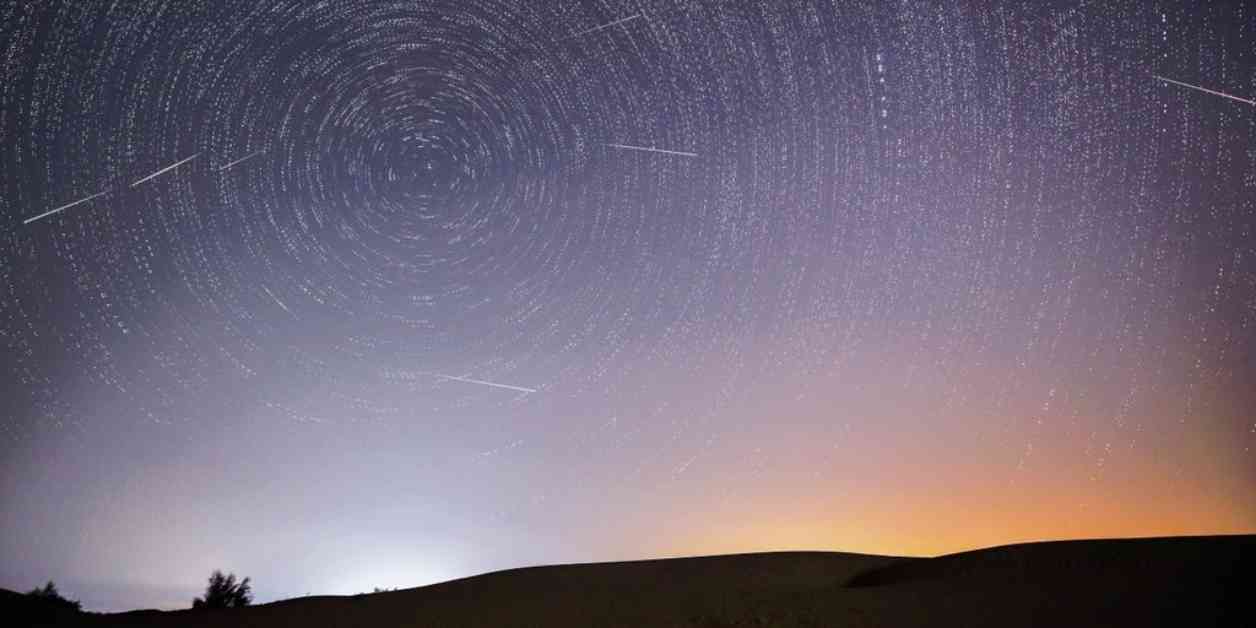The Perseid meteor shower will reach its peak late Sunday night, providing stargazers with a spectacular show in the night sky. NASA has advised that the best time to view the meteor shower is from midnight until dawn, with the highest number of meteors visible just before dawn when the radiant point is high in the sky. However, it is important to note that meteors can be seen anywhere in the sky, so there is no need to focus solely on the radiant point.
This annual meteor shower, known for its bright blue meteors, has been active since July and is considered one of the most vibrant and easily observed showers of the year. The shower occurs when the Earth passes through the debris left behind by comet Swift-Tuttle, resulting in a stunning display of shooting stars lighting up the night sky.
While most nights of the Perseids only offer a few meteors per hour, the peak of the shower typically brings a much higher number. The number of meteors can vary each year, with NASA noting that viewers may see as few as a few dozen per hour or as many as up to two hundred shooting stars an hour during the peak.
The 53% waxing moon will set shortly after 10:30 p.m., providing stargazers with a dark sky ideal for meteor watching. Those in areas free from light pollution and with clear skies may have the opportunity to witness a significant number of meteors throughout the night.
To make the most of the meteor shower, NASA recommends that viewers move away from city lights and find the darkest location possible to maximize their chances of seeing the shooting stars. Checking the weather forecast before heading out is also advisable to avoid any potential disruptions from fog or clouds that may obstruct the view.
Under optimal conditions, observers may be able to spot up to 50 meteors per hour, according to the American Meteor Society. The beauty of the Perseid meteor shower lies in the fact that it can be enjoyed without any special equipment, as the shooting stars are visible to the naked eye as they streak across the night sky.
The Perseids are known for their bright fireballs, as the shower is composed of larger particles compared to other meteor showers. This characteristic makes the shooting stars appear more luminous and easier to spot, adding to the overall spectacle of the event.
Considered one of the best meteor showers of the year, the Perseids are favored for their high meteor rates and favorable weather conditions. It is also worth noting that the Perseids are responsible for delaying a Space Shuttle launch in 1993, highlighting the significance of this annual celestial event.
Viewers in the Northern Hemisphere will have the best visibility of the Perseid meteor shower, which appears to radiate from the constellation Perseus. To enjoy the show, all you need is a clear sky, darkness, and a bit of patience, as meteors can be observed from all directions in the sky.
As the Perseid meteor shower graces the night sky, it offers a dazzling display of natural beauty that captivates both seasoned astronomers and casual sky watchers alike. Don’t miss the opportunity to witness this celestial phenomenon and marvel at the wonders of the universe unfolding right above you.




